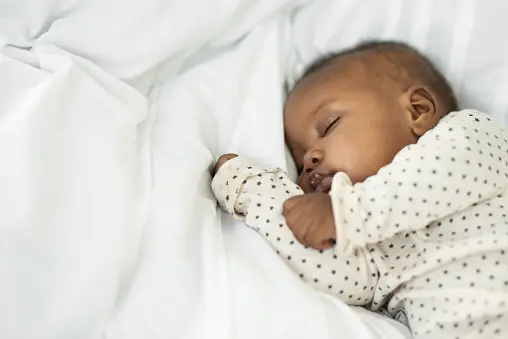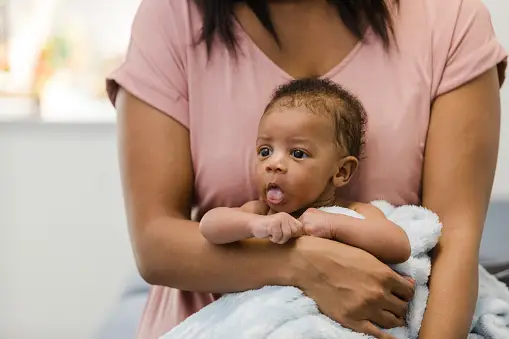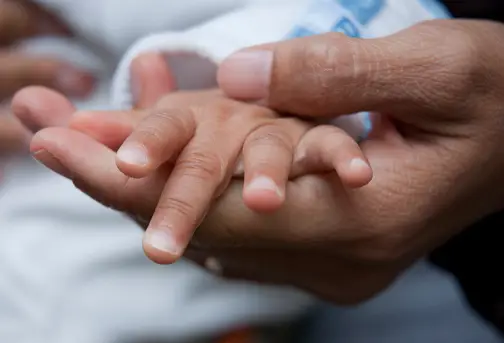Watching a baby in pain can be difficult for most mothers to handle. Ear piercing is painful and is one of those situations you can’t avoid.
The pain from this can cause interference with the baby's mood, sleep, and even appetite.
Culturally, Nigerians have their daughters' ears pierced on the seventh day of their birth. This custom of infant ear piercing is practised till now by even new-generation moms because it is less painful than waiting till they’re older for the procedure.
But is this true?
This article will discuss several medically approved ways to have your baby's ears pierced.
Methods of piercing a baby's ears
The significant risk of ear piercing, especially in infants, is infection. Doctors recommend waiting until your baby has gotten their tetanus vaccine. The vaccine will reduce the risk of complications from germs associated with piercing their ears.
Below are various methods of piercing your baby's ears:
At home piercing
It is best to have your baby's ears pierced by a pediatrician or medical expert. These professionals have a lot of experience and can pierce your baby's ears hygienically in a less painful way.
If you decide to handle it independently, you must first note the earring type. To avoid allergic reactions, you should use earrings made with stainless steel, titanium, niobium, glass, or pure gold above 14 karats. These types of earrings do not contain nickels, which is a known irritant.
Follow this guide for at-home piercing.
Things you will need are
- Mild soap
- Antiseptic
- Cotton wool
- Alcohol
- Talcum powder
- Piercing needle (18g, 6mm)
- A pair of earrings
- Marker pen
Prep for piercing
Some easy steps to get ready for the procedure include:
- Wash your hands thoroughly with mild soap and warm water. Scrub the palm of your hands together, wash between your fingers and clean out your fingernails, and wash the back of your hands, wrists, and half your forearms. Rinse thoroughly and pat your hands dry with a clean towel.
- Clean the piercing needle and pair of earrings thoroughly with an antiseptic.
- Clean and massage your baby's earlobes.
- Make single dots on the part of the earlobes you would like to have the earring on. You can use a body marker or the usual marker pen.
Distractions
Do not lie your baby on their back for this procedure. It is the common Nigerian way, but have them sit up instead. Your partner or a family member can hold them up on their lap.
Distract your baby with their favourite song or cartoon. You can also have an older sibling or a family member play and distract them with toys.
To help them remain calm beside the entertainment, we suggest you give them their favourite snack or pacifier, depending on their age.
Hold firmly
If your baby moves around during the piercing procedure, it distracts you and makes the process longer. Have the person carrying the baby put one arm around your baby's arms like a seatbelt.
And hold your baby's head firmly but gently to their chest. It will make the procedure quick and less painful.
Ear piercing
Experts advise piercing earlobes and not cartilage. An “Ear Piercing Complications In Children and Adolescents” study revealed that cartilage piercing is associated with more severe infections.
Hold their earlobes firmly. You can apply talcum powder if the area feels slippery. Use a piercing needle (not a sewing needle) to pierce the marked spot on your baby's earlobes.
A piercing needle usually has a hollow center and should be at least 18g and 6mm long. Wear your baby the earring and avoid touching the spot.
After pierce treats
Depending on your baby's age, breastfeeding or their favourite treat will help calm them quickly after this procedure. Breastfeeding, or any other form of milk or snack, will quiet their cries and possibly put them to sleep.
At the doctor's office
This is the recommended piercing method by experts. Here is how the doctor's procedure differs from an at-home one.
- Numbing gel is applied to both sides of the earlobes with a cotton bud. Your baby only feels a pinch during the procedure.
- The earlobe is cleaned 10 minutes later with a cotton swab dipped in alcohol.
- A hand pressure device is used to pierce the earlobes, inserting an earring simultaneously.
How much does it cost to pierce your baby's ears?
At public hospitals in Nigeria, ear piercing is usually free within the first few weeks of delivering your baby. You are required to buy the pair of earrings yourself.
If you use private hospitals, consult the administrative desk for complete information on the procedure and cost unique to the hospital.
Ear piercing aftercare
To avoid complications from infections and soothe your baby's pain from this procedure, it is important that you:
- Use pain medication recommended by your pediatrician for the first week at least.
- Apply an antibiotic ointment to the pierced lobes twice daily.
- Remember to gently rotate the earring twice daily.
- Do not take off the earring for the first six weeks.
- At the first sign of itching, redness, or any other reaction, visit your doctor.
As we always advise with pregnancy, consult your doctor before trying anything significant with them. But remember to pierce a newborn only with new or sterilized equipment.










Comments